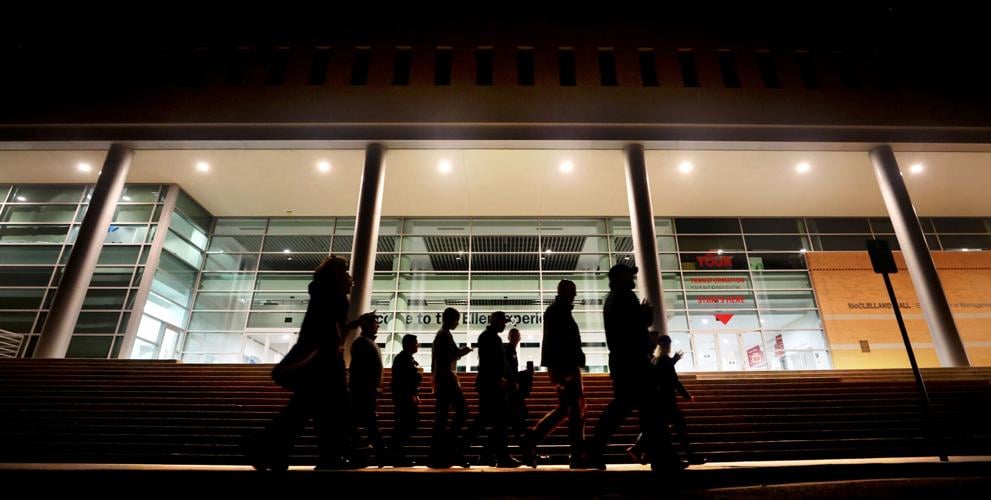Safety wasn’t something that Luke Swanson thought a lot about when he was deciding on where to go to college.
Now in his third year at the University of Arizona, Swanson was applying to colleges during the height of the COVID-19 pandemic. He wasn’t thinking about how much lighting the parking lots had or the blue light system. The Los Angeles native was just hoping that there wouldn’t be a major outbreak during his time studying architecture.
“I heard there were some bike thefts here, but I wasn’t really thinking about safety issues,” he said. “I just didn’t really think about it.”
It was about 8:30 p.m. Tuesday, and the UA’s campus was cloaked in darkness. Swanson had joined the university’s Chief Safety Officer Steve Patterson, along with a handful of other students and some employees from the Campus Safety office on a nighttime walk.
Patterson first created the nighttime safety walk program last month to hear from students, like Swanson, about areas on campus that make them feel unsafe.
“It’s a great opportunity to see how we’re doing and get a view of this campus from a perspective that I normally don’t have,” he said in an interview before the walk began.
Patterson and his team, which included a UAPD officer and a first responder from the EMS program, like to keep the walk to under 15 students. That way, he reasoned, he gets one-on-one time with each participant to answer questions and hear their concerns.
“I actually get more out of this than they do,” he said.
By having members of the campus safety team on the walks, Patterson is able to flag issues faced by students in real time.
The most frequent causes of concern?
“Garages and darkness,” Patterson said. “Nobody isn’t scared of the dark. Also, the edges of campus around Sixth Street and the Sixth Street Garage.”
Parking garages and lots are a point of concern for Swanson, the architecture student.
“The parking lots are not well lit at all,” he said. “Somebody could easily pop out at you.”
Swanson prefers to walk with groups of people when he travels at night, which is something Patterson recommended.
“Try as much as you can to stay in lit areas,” Patterson added. “I would recommend not having any earbuds in and to keep your face out of your phone, too.”
Mireya Justiniano, a first-year student from Rochester, New York, admitted that she often listened to music at night while walking back to her dorm. She participated in the night walk after seeing it advertised on Instagram.
Justiniano has to cross some heavily trafficked roads, like Speedway, to get back to her dorm at night, which sometimes makes her nervous.
“When I have to cross the streets, my mood definitely changes,” she noted.
At this point in the night walk the group was at the corner of East Helen Street and North Mountain Avenue. As the students huddled at a crosswalk, looking both ways, a car sped by, narrowly avoiding hitting the group.
It was right near the location that Justiniano says she was hit while on a motorcycle last fall.
“It was pretty scary,” she said. “Luckily I was wearing a lot of gear.”
Patterson led the group to a couple of underpasses that students frequently walk through. Though they’re well-lit, he said, students are still often nervous about walking them at night.
To ease fears, Patterson told the students about the blue light system.
“You can stand at any of these blue lights and see another one,” he explained to the group. “They are GPS located. So, if you push this button, it goes directly to UAPD dispatch.”
There are about 140 blue light buttons around campus for students to press if they feel unsafe.
“It’s pretty dark, but these blue lights glow like nothing else,” he said.
The hour walk went by quickly. Patterson said there will be one more in April and added that he is hoping to continue the program next year. Student participants receive Starbucks gift cards, which he pays for himself, because of the UA’s $177 million deficit.
“Maybe the students gain some additional life skills or tips,” he said. “Hopefully the students just feel a little bit more comfortable after.”






